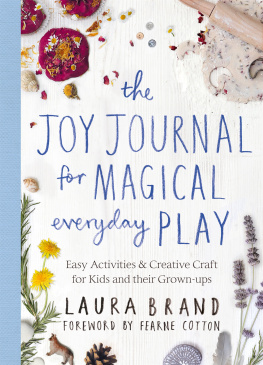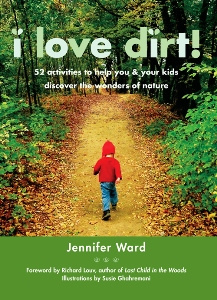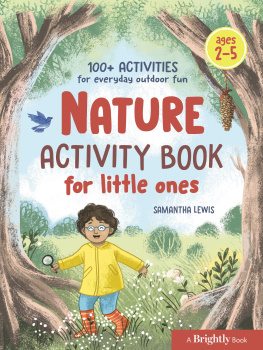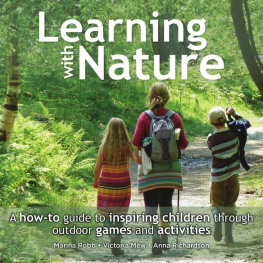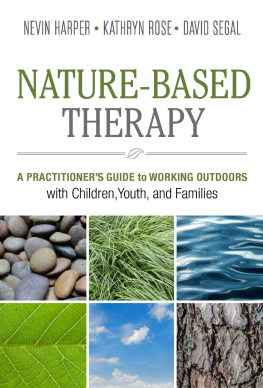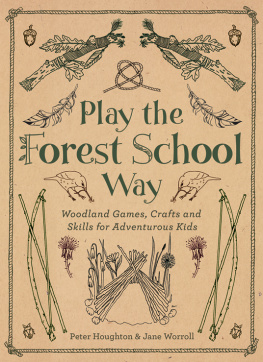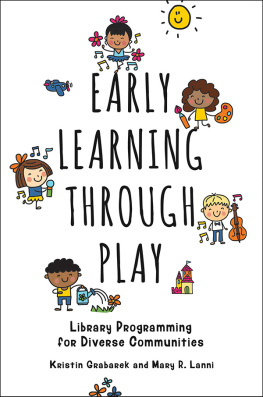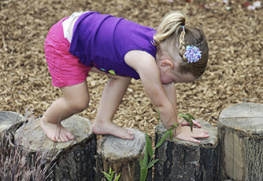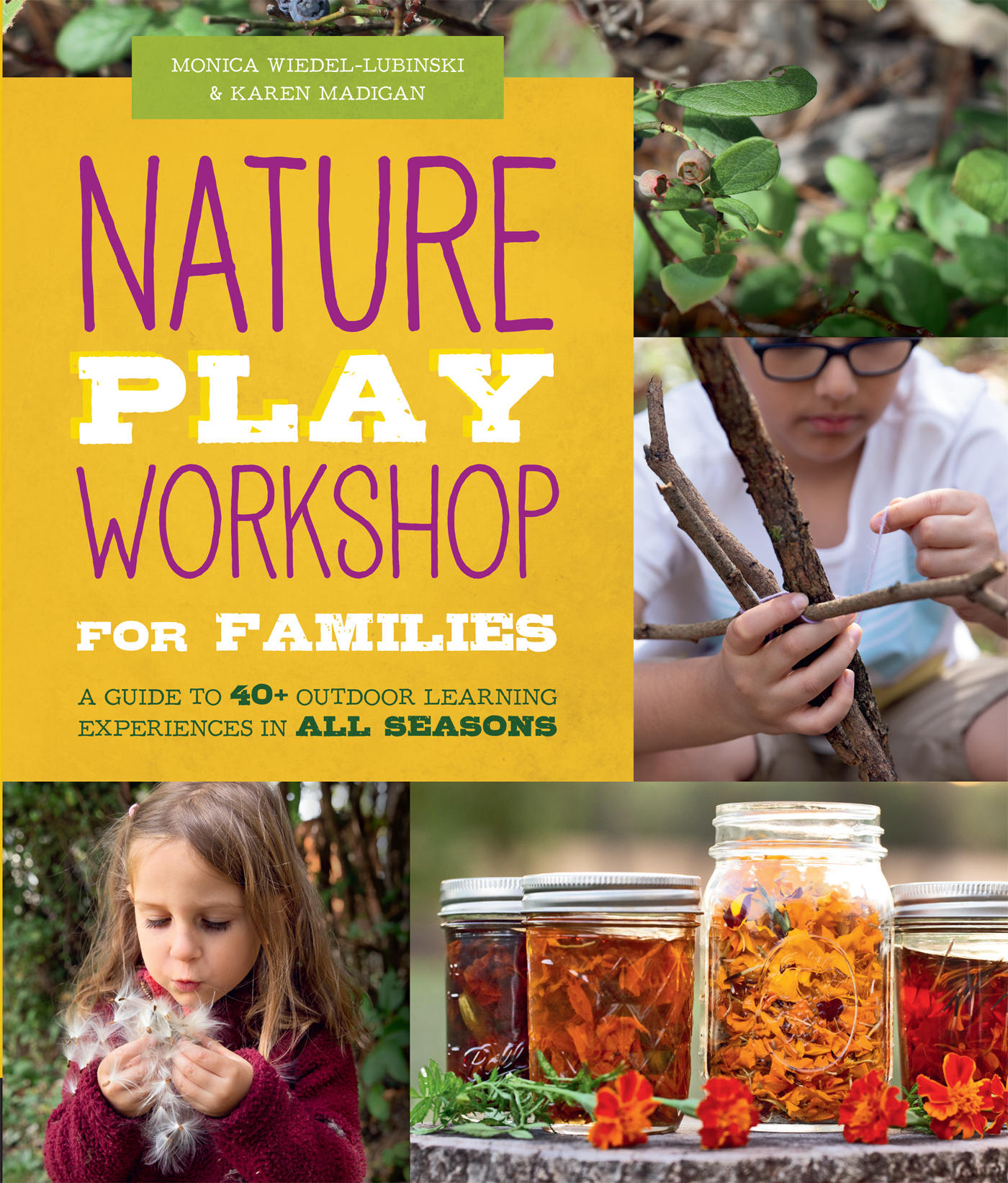NATURE
PLAY
WORKSHOP
FOR FAMILIES
GUIDE TO 40+ OUTDOOR LEARNING EXPERIENCES IN ALL SEASONS
MONICA WIEDEL-LUBINSKI
& KAREN MADIGAN

ACKNOWLEDGMENTS AND GRATITUDE
Over the years, our families, friends, and countless little children have inspired us to love others, and nature, more fully. We carry your love and wonder with us on every outdoor adventure.
We are grateful to talented photographer Monica Berg, whose images gracefully capture nature play throughout the book, and photographer Bill Bramble who contributed stunning nature photographs. We also thank the families and children who made time to be photographed, especially from Wild Haven Forest Preschool and A World of Friends School in Baltimore, Maryland.
To Dr. Mary Rivkin and all our colleagues who contributed insights, we appreciate your diverse perspectives on nature-based education. We deeply admire your dedication and expertisethank you for freely sharing it with our readers.
To Cromwell Valley Park and Oregon Ridge Nature Center, we thank you for welcoming us into your wild spaces. We are especially grateful to Irvine Nature Center, where we established a nature preschool as colleagues and became dear friends.
ADDITIONAL WORDS OF GRATITUDE FROM MONICA
To Nick and my children, Ethan and Tessa, my heart couldnt be more full of gratitude for your love and support. From blueberry-picking days to firefly-catching nights and every wild moment in between, I am inspired by you. To my parents, thank you for sharing your love of gardening, spiders, and bees with me and for allowing me to climb the maple tree. To my sisters, extended family, and friends, thank you for grounding me with unshakable roots and constant encouragement.
ADDITIONAL WORDS OF GRATITUDE FROM KAREN
To my dear friends and family who have been there cheering me on, thank you. To my niece, Charley, who brings tremendous joy to our family, you inspire everyone around you to follow their hearts. To Tim, my best friend and husband, who shares my passion for nature, thank you for being by my side for every adventure. And to my lovable lab, Saint, Im grateful that you cozied up next to me as I typed away; you are a true companion.
FOREWORD
Mary Rivkin, PhD
Its such a nice day! Lets get the kids outside. Do something fun as a family!
If you have ever said this or something like it, isnt the next sentence about what to do? You start to think what is possible, where is possible, and what is needed besides snacks. Maybe you grew up without playing outdoors much or in a different area where the outdoors had different things to do. This book can help you with whats next.
Monica Wiedel-Lubinski and Karen Madigan are seasoned outdoor teachers of young and elementary children. They have a strong understanding of what the outdoors offers to children for play and interest, and how adults and children can enjoy nature activities together. They also know that in the last 100 years or so, children have had increasingly less time outdoors, and firsthand knowledge about nature has decreased. Thus, parents and children are often beginners together in their nature explorations. This is particularly true in our migratory society, where contemporary families often live far from landscapes familiar to the adults. I observe my son, from Marylands well-watered green fields and forests, now appreciating the subtle shades of olive, brown, and gray in the shrubs and grasses on the stony hillsides of Southern California. He and his three-year-old child roam trails and meadows, day by day making this their home country. Hear that owl? one will ask. Or Where did the tadpoles go? Child and father are learning together about this rich natural environment.
The authors extensive teaching experiences are rooted in the mid-Atlantic states, and their deep array of activities reflect this background. Colleagues from other places also have contributed to the array. Every activity has been tested, tried numerous times, enjoyed, and found practical. Not every activity is doable in every location (for example, maple trees require long periods of cold weather to make the sap for maple syrup), yet all the ideas behind them can be widely applied. Some of the activities, such as boiling maple sap, work better with the supervision provided by parents, which is closer than that in a typical class. And often parents like a concrete result from their actions, so numerous activities satisfy that desire, such as the cozy stick houses. Children often are less concerned with making finished products than experimenting with, managing, rearranging, and playing with objects and environments, so activities are advised to those ends as well.
The book has a seasonal organization, but the standard four seasons dont have the same dates everywhere. Winter comes earlier and leaves later in northern parts of the Earth, and thus a gardening project in Maine has to be much more mindful of this short growing season than one in Arizona. Seasons are termed summer, autumn, winter, and spring, but families may learn other names related to their particular environment, such as hurricane, planting, or fishing. And furthermore, as environmentalist in her book The Sense of Wonder, Rachel Carson noted, There is something infinitely healing in the repeated refrains of naturethe assurance that dawn comes after night, and spring after winter. Young children sensitive to the routines of their individual lives can also tune in to, and find comfort in, natures routines. In a graceful touch, Monica and Karen honor the primacy of the seasons with an original poem beginning each section.
The season poems along with many others, both original and well-known, exemplify a theme of this book: many modes of expression and response to natural phenomena. Painting, dancing, drawing, writing, building, making and using butterfly wings, fingerplays, singing, inventing, imitating, and caring for things are major observable responses. Sometimes children silently observe and later, sometimes much later, perhaps at bedtime, demonstrate what they have taken in. Notably, in this book, naming things is much less important than noticing, observing, and re-creating through multiple means. Young children are open to learning in many waystheir active minds range quickly over possibilities. If play with otherssiblings, parents, friendscan be part of the response, so much the better. Play, with its fun and freedom, brings the concepts, vocabulary, social and motor skills, and other desirables along in its wake. And indeed, the lightness of the authors prose underlines this.
A second theme of this book is natures abundance. Layers of crispy bright leaves invite running, shuffling, flinging, collecting, sorting, and crafting. If a parent shakes a just-ready branch of blossoms over a child, the shower is delighting. Pinecones, fir cones, gleaming chestnuts, sprouting acorns, flying seeds from dandelions, milkweed, thistles. Brown cattail heads packed with seeds. Golden fields of mustard and dandelions. Bushes drooping with sweet berries. Stones, pebbles, gravel, broken shell bits, whole shells. So much to touch, and finger, and smell, and pinch, and, if irresistible, stash in a pocket. So much to love, really. And different from inside, not needing to be put away. Everything is where it belongs already but can be played with. Snowflakes, raindrops, rainy creeks. Such things are close at hand, but take a look aroundhow many trees, hills, mountains? Look up, so many clouds changing all the time, in different shapes and sizes. On a clear night, note the abundance of stars, especially in a dark area. Truly there is plenty to go around, to share together, to rejoice in.


